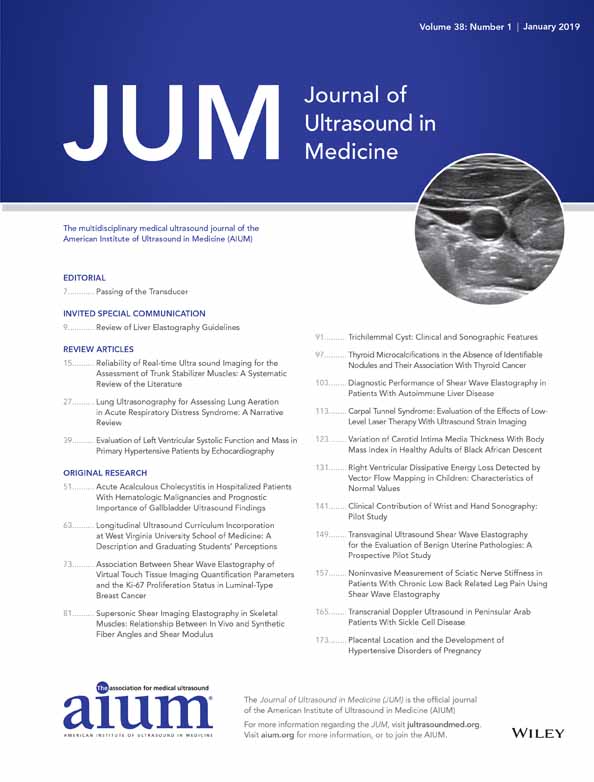Placental Location and the Development of Hypertensive Disorders of Pregnancy
We thank Kristin Duncan for assistance with drafting the manuscript.
Abstract
Objectives
Abnormal placentation is an important factor in the pathogenesis of preeclampsia. As a result of diminished blood flow, the incidence of preeclampsia might be higher in patients with laterally located placentas compared to patients with centrally located placentas. The objective of this study was to evaluate the relationship between placental location and the development of hypertensive disorders of pregnancy.
Methods
Patients with singleton pregnancies who were seen in our ultrasound unit and delivered at our institution from October 2014 to April 2015 were included. The incidence of hypertensive disorders was compared in those with a lateral placental location and those with centrally located placentas (placental locations other than lateral). Baseline characteristics and pregnancy outcomes were compared between groups. The χ2 test, Fisher exact test, Mann-Whitney U test, and t test were used when appropriate. P < .05 was considered significant.
Results
We included 464 patients; 411 (88.57%) had centrally located placentas, and 53 (11.42%) had laterally located placentas. The incidence of hypertensive disorders of pregnancy was similar between groups (21% versus 19%; P = .71). Gestational age at delivery (P = .73), and small for gestational age (P = .96) were also similar between our study groups.
Conclusions
In our study, there was no difference in the rate of hypertensive disorders of pregnancy between patients with central and laterally located placentas.




